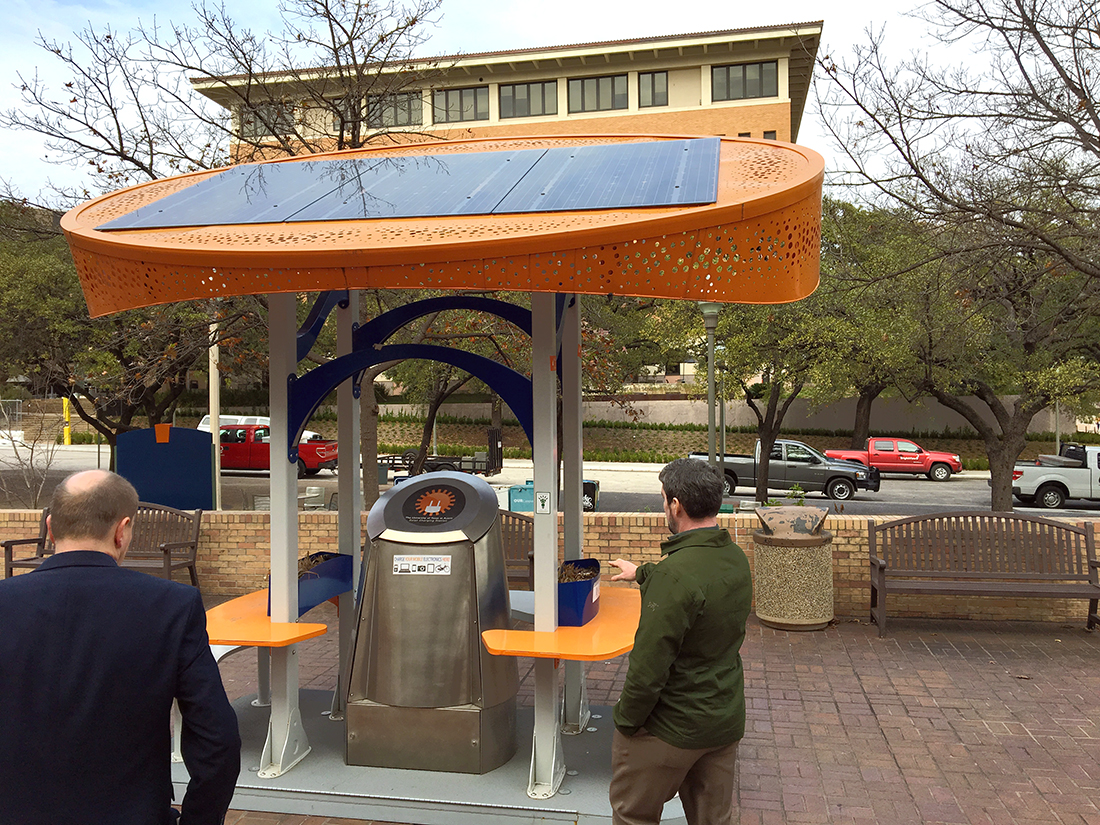
With a Green Fund fee, some University of Texas System institutions now have solar power charging stations, energy efficient buildings and water conservation efforts.
The University of Texas Rio Grande Valley is considering establishing a Green Fund for similar projects.
A Green Fund fee would be added to tuition and set aside for sustainability purposes. Recycling, resource conservation and waste reduction are a few of the actions the Green Fund is dedicated to improve on each campus.
The University of Texas at Austin was the first to establish a Green Fund within the UT System. It was launched as an effort to improve sustainability within the university.
In 2009, students started to advocate for the cause and by 2010 the Texas Legislature passed House Bill 3353, establishing the Green Fund.
Of the 14 institutions within the UT System, UTRGV and University of Texas at Dallas are the only universities without a Green Fund.
The fee charges students $5 for each long semester (spring and fall) and $2.50 for each short semester (Summer I and II).
UT Austin’s Fall 2016 Sustainability Master Plan states, “The goal of this plan is to ensure that sustainability efforts will continue to evolve on campus with a consistent vision and institutional identity.”
The purpose of the Green Fund is to bring sustainability programs to the university.
UT Austin has dedicated courses, certificates and two degrees, a bachelor of science in environmental science and a bachelor of arts in sustainability studies that offer students sustainability focused scholarship.
Keith Muhlestein, director of sustainability and chair of the President’s Council of Sustainability for UTSA, expressed the need for conservation.
“The question why [people should conserve] was answered 50 years ago,” Muhlestein said. “To still be having the conversation to why we, as human beings or we as a population, should be more aware of our environment and more conservation-minded, is astonishing to me.”
In a recent survey conducted by the UTRGV Academic Cost Committee, students were asked, “Would you be in favor of adding a new environmental services fee (green fee) to provide funds for additional environmental improvements?”
Of 25,822 students, only 3,789 replied to the survey: 55 percent opposed the fee, 25 percent were undecided and only 20 percent were in favor. Eighty-five percent of the student body did not respond.
The question did not include the cost of the fee, when the fee would be implemented or what environmental improvements would be made to the campus.
“We started with our signatures promoting the idea of $2,” said Julissa Roman, president of the Environmental Awareness Club. “No one liked the idea of $5.”
The EAC began the efforts in 2010 at legacy institution University of Texas Pan American. The EAC failed to implement the fee several times.
Roman started the petition at UTRGV more than two semesters ago.
“Our university, given its size and reputability, has not taken initiative in such efforts just yet, considering the worldwide crisis we are facing of climate change,” she said. “As an institution of higher education, it should be our priority to implement such policies that support a progressive agenda, such as the Green Fund.”
Denisse Molina-Castro, president of the Student Government Association, explained that UTRGV is on a four-year “set fee”, which is uncommon for any other UT System university.
“Your tuition shouldn’t go up,” Molina-Castro said. “You’re guaranteed that tuition, which means that any additional fees does not apply to the current students.”
However, the additional fee can be applied to incoming students, she explained.
The SGA president also said the process of achieving the goal of adding a Green Fund fee would take time because research and many steps are needed before implementing an institutional fee.
The steps include presenting the research to the SGA, then to UTRGV President Guy Bailey. After Bailey reviews the proposal, it will go to the UT System board of regents. The regents will consider the proposal. If they approve the proposed fee, the Green Fund will be implemented and included in the institution’s tuition.
“The process can last anywhere from a couple of months to a year,” Molina-Castro said. “It just depends since we are relatively new. We haven’t had to add any fees; we [also] haven’t requested any fees to our new structure.”
Roman Serna, a business accounting sophomore, said he would be “OK” with the fee.
“It’s nothing big,” Serna said. “If everyone contributes, it could easily be done. I don’t see it as a bad thing; [I] see it as a positive thing.”
Anndrea Aguilar, a social work freshman, also found the fee harmless.
“It’s just another $5 that you pay for your tuition,” Aguilar said. “I wouldn’t mind [the fee]. If it worked for other campuses, I’m pretty sure it will work here.”
Julissa Roman said the Green Fund fee proposal will be finalized by February 2018. The EAC will seek the support of the student body, the help of the SGA and the directors of sustainability within the UT System universities, including Muhlestein.
For more information, email julissa.roman01@utrgv.edu and keith.muhlestein@utrsa.edu





